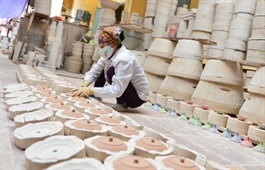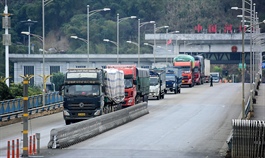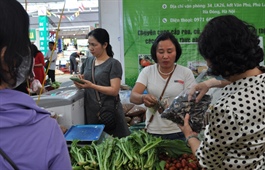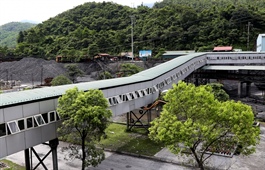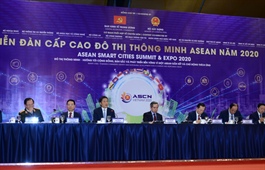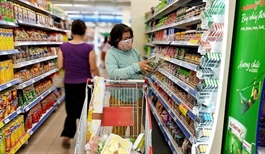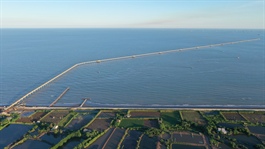Vietnam tourism businesses join hands for salvaging industry
Vietnam tourism businesses join hands for salvaging industry
Tourism service digitalization is a must-do task of local authorities and businesses to revive the tourism industry.
At the national tourism conference 2020 last weekend, Deputy Prime Minister Vu Duc Dam suggested that those operating in the industry all over the country should join hands to help Vietnam’s tourism industry to survive the difficult situation caused by Covid-19.
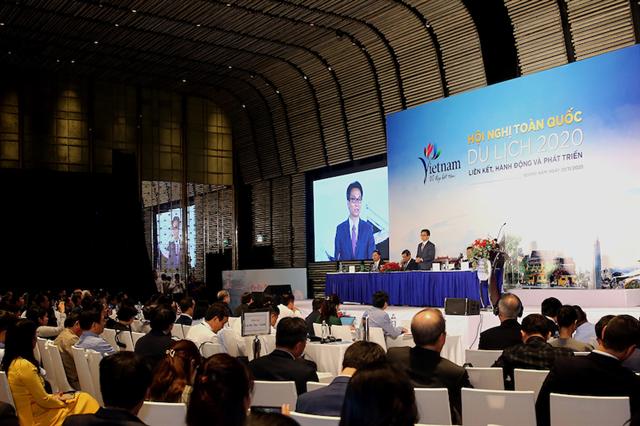
An overview of the national tourism forum in Quang Nam province. Photo: Dinh Nam
|
Focused issues
At the conference held in Hoi An ancient city of Quang Nam province, Deputy PM Dam highly spoke of the efforts of regulators and businesses from central to local levels in gaining significant results in the past time despite the pandemic complication.
He raised three issues on which the industry should focus to develop Vietnam’s tourism industry in the coming time including guaranteeing the quality in all segments, restructuring the inbound tourism market, and ensuring safety for tourists.
Especially in the context of the Covid-19 pandemic, tourism businesses need to focus on harnessing the domestic market, providing Vietnamese travelers with high-end experiences that had been thought to be reserved only for foreigners, Mr. Dam underlined.
Appreciating the cooperation initiative between Ho Chi Minh City and regions in the country, the Deputy PM said that localities should remove all obstacles for smooth coordination between localities, industries, businesses, state agencies and the community.
For his part, Minister of Culture, Sports and Tourism Nguyen Ngoc Thien told the conference that Vietnam’s tourism is predicted to lose US$23-billion in revenue due to Covid-19. The number of international and domestic tourists is estimated to drop by 80% and 45%, respectively, so far this year from a year ago. The conference was aimed at reviewing and discussing about solutions for reaching the dual goal of the Covid-19 prevention and sustainable tourism development.
The tourism industry needs to continue to be proactive, creative, innovative thinking, methodical in investment, and build more new high-quality tourism products, in line with the needs and trends of tourism consumption in the context of post Covid-19, Mr. Thien added.
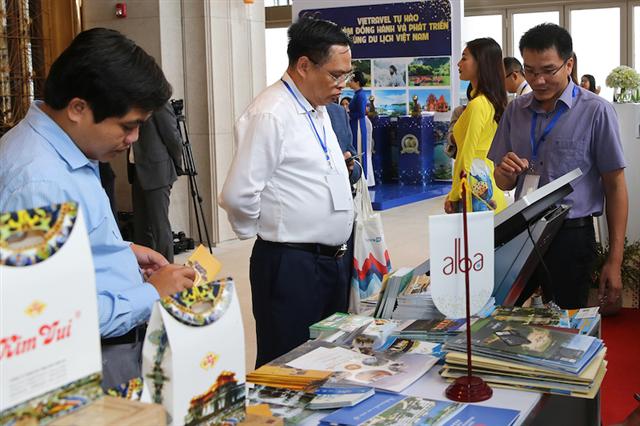
Booths from local travel businesses are displayed within the forum. Photo: Dinh Nam
|
Some tourism products are expected to be in high demand, such as health travel products, resorts, and the provision of multiple experiences in one destination instead of exploring multiple destinations in one trip. Therefore, the construction and development of tourism products in the coming time should emphasize on increasing the experience for tourists, ensuring security and safety for visitors and strengthening supply chain links.
Digital transformation for tourism
At the conference, Deputy Prime Minister Dam assessed that implementation digital transformation in the tourism industry is still slow despite some significant results in recent years. He required the sector to be more drastic because tourism is favorable for digital conversion.
Many tourism services based on information technology in Vietnam are mostly commercialized by foreign enterprises. Therefore, ministries, localities, associations and tourism businesses need to create digital platforms for the tourism industry and the entire society.
Basing on digital platforms, visitors can experience and research before making a booking decision. Besides, they could register a tour, book a restaurant with a smartphone.
The deputy PM pointed to a past shortcoming of the industry regulators which was the weak statistic work on the number of hotels, accommodation facilities, restaurants, food caterer, among others. However, thanks to the formulation of a common database, the Vietnam National Administration of Tourism has now documented around 80,000 hotels and accommodation establishments nationwide, as well as the number of cultural heritages, tourist attractions, antiques, artifacts in museums.






